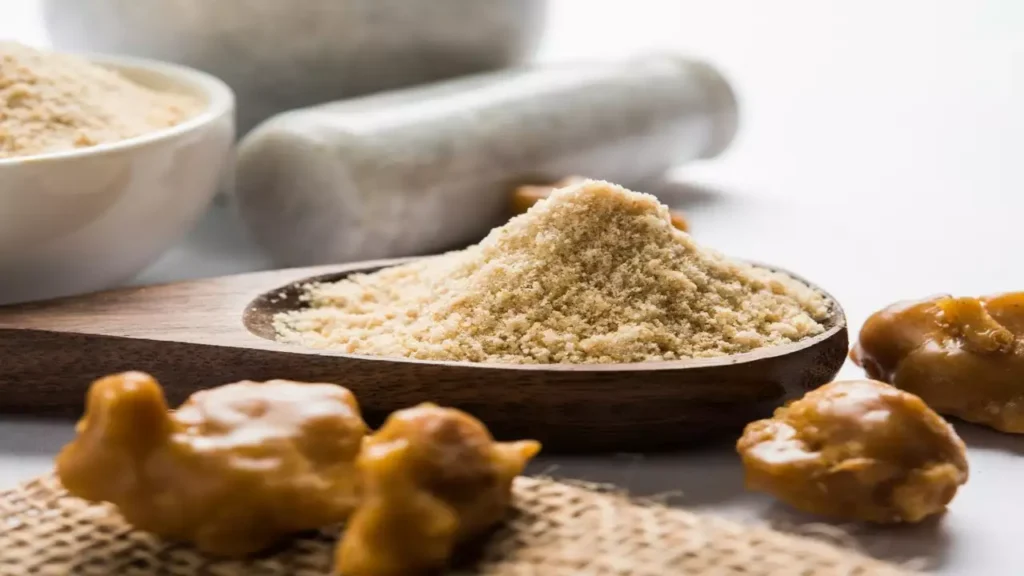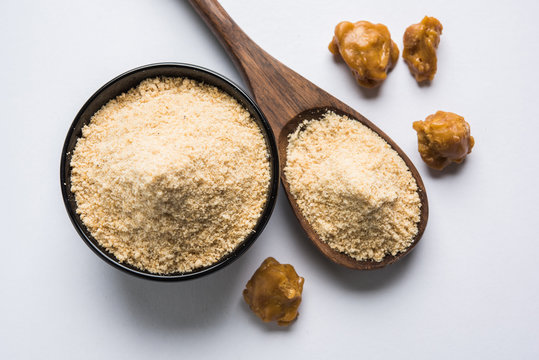Hing, or asafoetida, serves as an excellent substitute for garlic, especially in Jain and vegan diets that avoid root vegetables or animal-based ingredients. Known for its strong aroma and unique flavor, hing mimics the savory depth of garlic without altering dietary or religious practices. This versatile spice is often used in Indian cooking to enhance the taste of dals, curries, and vegetable dishes, making it a preferred choice for those seeking a garlic-free alternative. With its digestive benefits and ability to elevate flavors, hing is an essential ingredient for anyone looking to create flavorful, compliant meals in line with Jainism or vegan principles.
1. What are the main differences between hing and garlic in terms of flavor and health benefits?
Hing has a pungent, sulfurous aroma and is rich in antioxidants, while garlic offers a strong, savory flavor and is known for its antimicrobial properties.
Long Answer
- Flavor: Hing (asafoetida) has a sharp, sulfur-like taste and aroma, used in small quantities to mimic the taste of onions and garlic. Garlic has a robust, spicy-sweet flavor that mellows when cooked.
- Health Benefits:
- Hing: Known for its antioxidant, anti-inflammatory, and digestive properties. It helps reduce bloating, supports gut health, and combats respiratory issues.
- Garlic: Rich in allicin, it offers antimicrobial, antiviral, and antifungal benefits. Garlic boosts immunity, lowers blood pressure, and supports heart health.
- Hing: Known for its antioxidant, anti-inflammatory, and digestive properties. It helps reduce bloating, supports gut health, and combats respiratory issues.
Hing and garlic, while both integral to many cuisines, bring unique flavors and health benefits to the table. Hing, with its sulfurous pungency, can be overpowering in its raw form but when cooked, it mellows down, adding depth to dishes without dominating them. It is particularly revered in traditional Indian medicine for its myriad health benefits. It can act as a digestive aid, anti-inflammatory agent, and respiratory remedy.
Garlic, on the other hand, is a culinary giant known for its versatile flavor profile, ranging from spicy raw to sweet and nutty when roasted. It’s a staple in various cuisines around the world and is celebrated for its health-promoting properties. The compound allicin, released when garlic is chopped or crushed, is renowned for its antimicrobial effects, making garlic a go-to remedy for colds and infections.

2. How can hing be used as a substitute for garlic in various recipes?
Hing can replace garlic in recipes by using it in smaller amounts, typically dissolved in oil or water to disperse its flavor evenly.
Long Answer
- Amount: Use a pinch of hing (asafoetida) to replace one clove of garlic. Its potent flavor means a small amount goes a long way.
- Method:
- Cuisines: Works well in Indian, Middle Eastern, and Mediterranean dishes where garlic is typically used.
Integrating hing into your cooking routine as a substitute for garlic can be quite seamless. Due to its potency, a small pinch of hing suffices for a clove of garlic. It’s best utilized in the tempering process, where it’s added to hot oil or ghee to release its full flavor and aroma. This method ensures the hing is well-distributed throughout the dish, providing a balanced taste.
In water-based dishes like soups or stews, dissolving hing in a bit of water before adding it to the pot can help disperse its flavor evenly. This technique works particularly well in recipes where the liquid is an essential component, ensuring the hing’s unique taste permeates the dish uniformly.
Hing’s versatility shines in various cuisines. In Indian cuisine, it’s a cornerstone for many vegetarian dishes, lending its distinctive flavor to dals and curries. Middle Eastern and Mediterranean cuisines, which often feature garlic prominently, can also benefit from hing as a flavor enhancer, providing a similar depth without overpowering the other ingredients.
3. Are there any specific dishes where hing works better than garlic?
Hing is particularly effective in lentil dishes, pickles, and savory snacks where its unique flavor profile enhances the overall taste.
Long Answer
- Lentil Dishes: Hing enhances the earthy flavor of lentils, making it ideal for dal and soups.
- Pickles: The strong, pungent flavor of hing works well in preserving pickles, adding a distinctive taste.
- Savory Snacks: Enhances the flavor in snacks like pakoras, sev, and chivda, providing a robust taste without overpowering the dish.
- Curries: Adds depth to vegetable and legume curries, making them more flavorful and aromatic.
There are certain dishes where hing not only serves as a substitute for garlic but can actually outperform it in terms of flavor and aroma. For instance, in lentil-based dishes like dal, hing’s ability to enhance the earthy, rich flavors of lentils makes it a preferred ingredient. Its pungency adds a robust layer of taste that complements the subtlety of the lentils.
Pickles are another area where hing excels. Its strong, sharp flavor helps in preserving and enhancing the taste of pickled vegetables, providing a distinctive tang that is often associated with traditional Indian pickles. The unique profile of hing can stand out and elevate the overall flavor, making the pickle more aromatic and appetizing.
In savory snacks like pakoras (fritters), sev (crispy noodles), and chivda (savory trail mix), hing can provide a flavorful punch without the overpowering taste that garlic sometimes imparts. It balances well with the other spices and ingredients, ensuring that each bite is a burst of well-rounded flavor.
Curries, especially those that focus on vegetables and legumes, benefit greatly from the addition of hing. It adds depth and complexity to the curry, making it more aromatic and flavorful. The unique taste of hing blends harmoniously with the spices typically used in curries, creating a dish that is rich and satisfying.

4. Is hing suitable for people with dietary restrictions or allergies, such as Jain or vegan diets?
Yes, hing is suitable for Jain and vegan diets as it is plant-based and free from animal products, while also being gentle on the digestive system.
Long Answer
- Jain Diet: Hing is a staple in Jain cuisine as it adheres to their dietary restrictions, avoiding root vegetables like garlic and onions.
- Vegan Diet: Being entirely plant-based, hing fits well into vegan diets, offering a garlic-like flavor without any animal-derived ingredients.
- Allergies: Generally, hing is safe for people with garlic allergies, but it’s always recommended to check for individual tolerance.
Hing is particularly valuable for those with specific dietary restrictions, such as Jain or vegan diets. Jainism prohibits the consumption of root vegetables like garlic and onions, as their harvesting involves uprooting the entire plant, which is believed to harm small organisms.
5. What are some easy recipes that highlight the use of hing as a substitute for garlic?
Recipes like Hing Dal, Hing Chutney, and Hing Rice highlight hing’s versatility as a substitute for garlic, offering delicious and aromatic dishes.
Long Answer
Conclusion
Hing, with its potent aroma and myriad health benefits, serves as an excellent substitute for garlic in Jain and vegan diets. Whether it’s enhancing the flavors of traditional dishes or offering new culinary experiences, hing proves to be a versatile and valuable ingredient. Embracing hing not only aligns with specific dietary restrictions but also opens up a world of delicious and aromatic possibilities.
